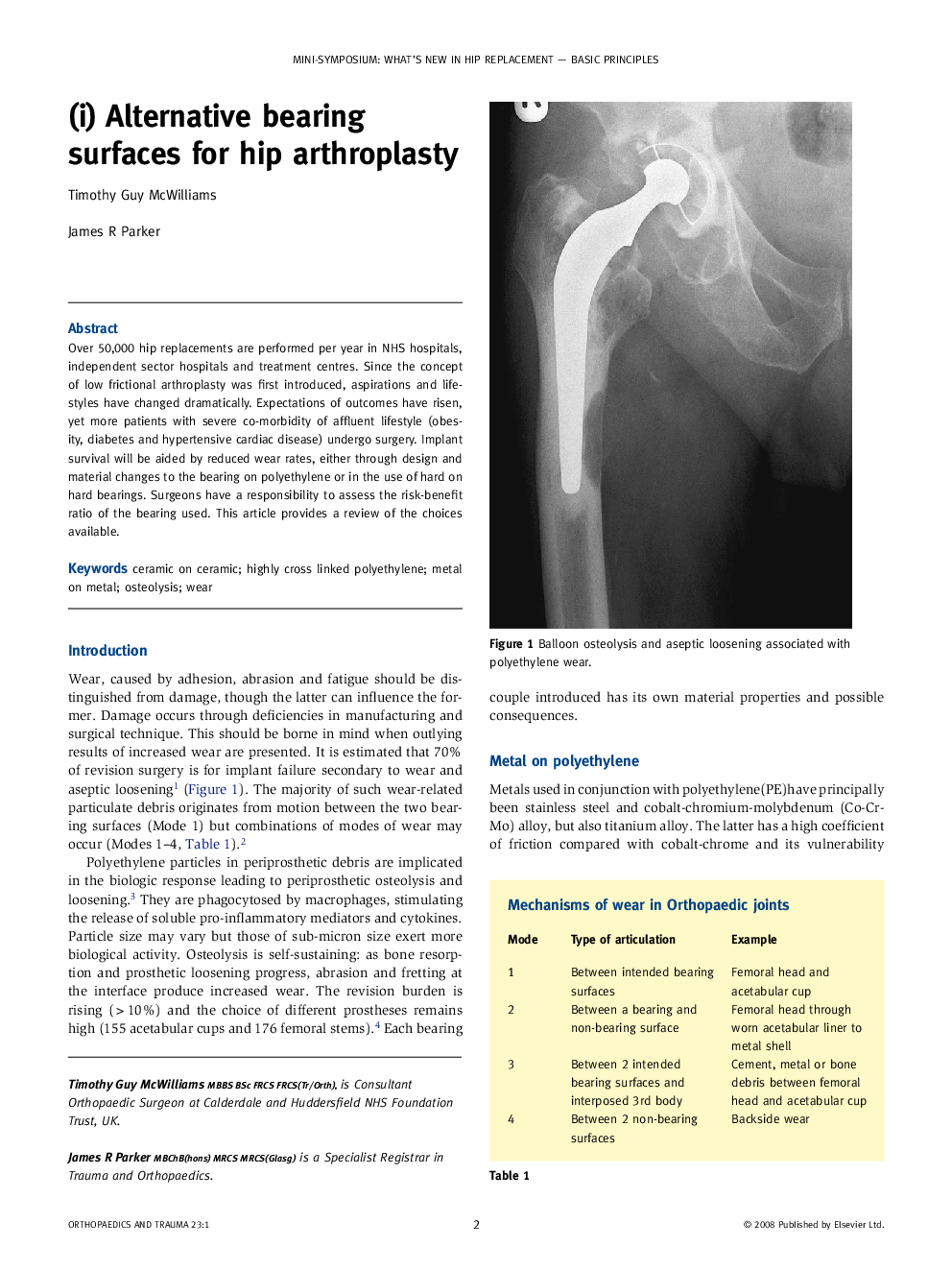| Article ID | Journal | Published Year | Pages | File Type |
|---|---|---|---|---|
| 4080521 | Orthopaedics and Trauma | 2009 | 6 Pages |
Abstract
Over 50,000 hip replacements are performed per year in NHS hospitals, independent sector hospitals and treatment centres. Since the concept of low frictional arthroplasty was first introduced, aspirations and lifestyles have changed dramatically. Expectations of outcomes have risen, yet more patients with severe co-morbidity of affluent lifestyle (obesity, diabetes and hypertensive cardiac disease) undergo surgery. Implant survival will be aided by reduced wear rates, either through design and material changes to the bearing on polyethylene or in the use of hard on hard bearings. Surgeons have a responsibility to assess the risk-benefit ratio of the bearing used. This article provides a review of the choices available.
Related Topics
Health Sciences
Medicine and Dentistry
Orthopedics, Sports Medicine and Rehabilitation
Authors
Timothy Guy McWilliams, James R. Parker,
